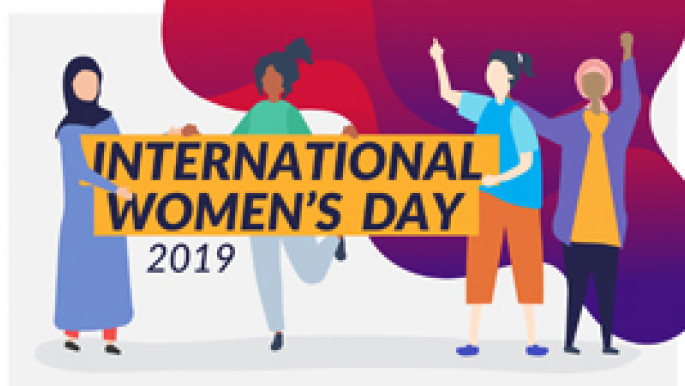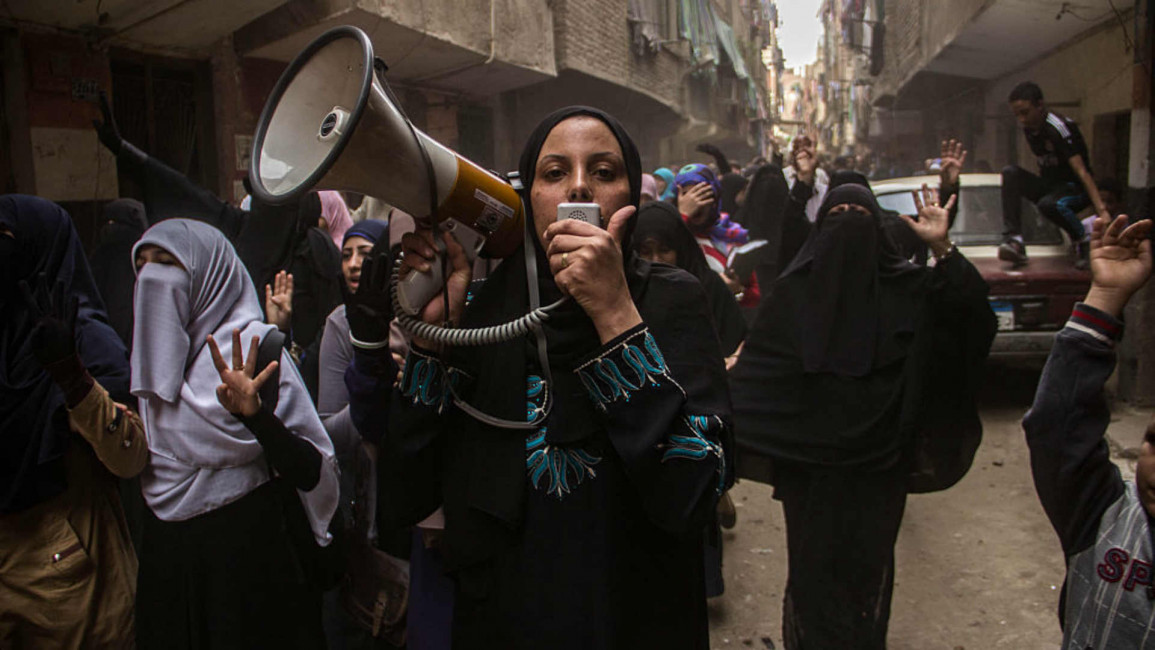![Dr Sahar[1] (2).jpg Dr Sahar[1] (2).jpg](/sites/default/files/styles/image_72x72/public/media/images/A725E5B5-7797-463D-8F3A-67128E20F770.jpeg?h=04d92ac6&itok=m4m6J-eb)
The many faces of Arab women's activism
These struggles cover three closely interconnected spheres, namely the social, legal and political domains.
Realizing that it is not possible to fight one battle without fighting the others, or to succeed in one battlefield without succeeding in the rest, Arab women have been relentlessly engaging in these three parallel struggles for many years.
Arab women's social struggle has always been pitted against multiple forms of misogyny, patriarchy, rigid and stagnant traditions, as well as negative social practices that harm women, such as denying them the equal right to education and employment, honour killings, female genital mutilation, sexual harassment and domestic violence.
Recent generations of Arab women turned to social media to advance their causes, and to fight these dangerous social ills, using multiple forms of resistance and online activism, a phenomenon dubbed "cyberfeminism".
Some good examples of this new wave are the two anti-sexual harassment initiatives in Egypt: Shoft Taharosh ("I saw harassment") campaign and the HarassMap app, which were both successful in combining online and offline resources and which relied on partnerships by both men and women.
 |
Whenever there are violations of human rights due to autocracy, dictatorship or corruption, women are most likely to be affected |  |
Arab women have also launched a legal struggle against all laws which disadvantage them, or deny them their basic rights, as well as issuing new laws designed to empower women.
One remarkable example has been a groundbreaking law passed in Tunisia which fights violence against women.
This historical new law number 58 of 2017 has been hailed by feminists and activists for its comprehensiveness and holistic approach to tackling the issue of violence against women, by defining it as any attempt to harm women, whether physically, sexually, economically, socially, or politically.
By doing so, this law expanded the definition of the term "violence", in a way which safeguards and protects women, not just in the private sphere of the home and the family, but also in the public sphere of the workplace, in politics, civil society organisations, and in all political, social, and economic domains simultaneously.
Twitter Post
|
The passing of this law created a ripple effect in many parts of the Arab world, and was echoed in other Arab countries, including Jordan and Lebanon. These countries are now proceeding to issue their own laws to protect women's rights and to safeguard women's welfare in more effective ways, including repealing the infamous "marry your rapist" law, which enables a rapist to escape legal consequences by marrying the victim.
Read more: 'Fighting for our stolen rights': Sudanese women call for social justice revolution
The political struggle involves fighting all forms of tyranny, dictatorship and autocracy. There is no question that Arab women played a very important and visible role during the Arab Spring uprisings, both online and offline, which captured international media attention and culminated in the selection of Tawakkol Karman as the first Arab woman to win the Nobel Prize.
But eight years after the eruption of these uprisings, a wide array of outcomes unfolded in the six countries which witnessed these waves of revolt and tides of change. Most are unsettling, and many of them tragic:
Libya is torn by sectarian strife; Yemen has been bombed day and night; Syria is experiencing the worst civil war in modern history; Egypt has returned to a military dictatorship far worse than Mubarak's; and Bahrain's uprising was suppressed. This has had dire consequences for the citizens of these countries, but in particular for women.
Although Arab women played very significant roles in the Arab Spring uprisings, with the exception of Tunisia, women in the so-called "post-Arab Spring" countries have not gained much from the 2011 movements that were derailed, in some cases by counter-revolution.
Instead, Arab women paid an even higher price, many of them becoming refugees, victims of rape and harassment, or single mothers whose partners were lost in war or 'disappeared' by authoritarian regimes.
In other cases, many lost their freedom and are facing jail sentences for being activists or journalists, as in the case of Syrian opposition activist Orouba Barakat, and her daughter, Halla Barakat, a journalist who worked for the Syrian opposition channel Orient News TV.
There are certainly a number of useful lessons to be learned from this unfolding spectacle.
 |
We can never divorce the issue of women's rights from the broader issue of human rights |  |
First, we can never divorce the issue of women's rights from the broader issue of human rights. Women's rights are part and parcel of the overall human rights context and condition in any country.
Whenever there are violations of human rights due to autocracy, dictatorship, corruption, or chaos, women are most likely to be negatively affected, due to misogyny and the patriarchal power structures that work against women, and that are still deeply entrenched in many Arab societies.
Second, the realities and challenges faced by Arab women are part and parcel of the socio-political context of their respective countries, each with its unique power dynamics, paths to democratisation and reform, and recipes for modernisation and transformation.
 |
|
As the varied outcomes following the Arab Spring uprisings have shown, there is no such thing as a "one-size-fits-all" path to democratisation, in general, or to addressing the challenges facing Arab women, in particular.
Third, it's useful to remember that Arab women's various forms of activism, resistance and struggle were not born with the Arab Spring uprisings, rather they preceded these uprisings by many years, and will continue to outlive them for many to come.
As much as we are tempted to glorify the historical moment that accompanied these uprisings, and that brought iconic images and memorable faces signifying Arab women's heroism, bravery, and courage into the spotlight, it's wise to remember that this is only one among many phases of Arab women's continuous and decades long struggles.
Fourth, Arab women are also fighting invisibility in three domains: In the socio-economic context, where many of their important contributions, including economic labour and social contributions go unnoticed, undocumented and taken for granted; in academia, where they don't receive sufficient credit or attention; and in the media, where they are either underrepresented or misrepresented.
 |
Arab women's various forms of activism, resistance and struggle were not born with the Arab Spring |  |
Finally, the future of Arab women's activism must take into account all of these points, and crucially, must involve women themselves. It must allow them to tell their stories in their own voice, and to chart their own future with their own hands, hearts and minds.
It is only through such a comprehensive and holistic approach that positive political transformation, as well successful social transition can be achieved.
If and when Arab countries will be able to apply this principle remains largely to be seen, as many of these countries are at the crossroads of transition, and the road ahead remains largely uncharted for them.
One thing is certain, however: The winds of change for Arab women have already started blowing, and they will not stop.
Follow her on Twitter: @Skhamis
Opinions expressed in this article remain those of the author and do not necessarily represent those of The New Arab, its editorial board or staff.





 Follow the Middle East's top stories in English at The New Arab on Google News
Follow the Middle East's top stories in English at The New Arab on Google News


